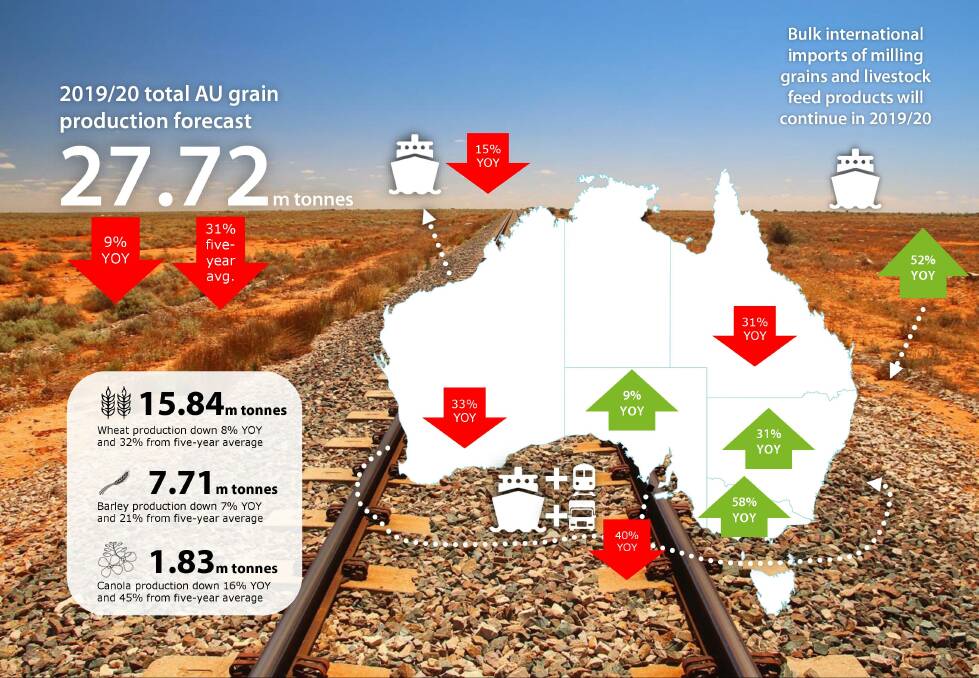
GRAIN industry analysts continue to shave off tonnage from the total winter crop, with most now having a significant drop in year on year production as a tough spring continues to bite.
Subscribe now for unlimited access to all our agricultural news
across the nation
or signup to continue reading
Rabobank last week forecast a total winter crop of 27.7 million tonnes, down 9.7 per cent on last year's drought impacted crop of 30.4m tonnes declared by the Australian Bureau of Agricultural and Resources Economics and Sciences (ABARES).
Of that, Rabobank forecast 15.8m tonnes of wheat, Australia's most important crop.
Other agencies have total wheat production even lower, with the National Australia Bank (NAB) coming up with a figure of 15.5m tonnes, down from the 17.7m tonnes ABARES said was produced last year.
The major reason for the year on year downgrade is the change to more normal conditions in Western Australia.
NAB commodity analyst Phin Ziebell has WA wheat production sitting at 6.3m tonnes, a whopping 62pc down on the official 10.2m tonnes produced last year.
Mr Ziebell said NAB made a massive month on month slash in its October report, dropping 4.5m tonnes, or 22.5pc as the dry, localised frost and heat hit across all grain producing regions, with NSW production being revised particularly harshly with crops being cut for hay due to the dry weather and good returns for hay.
Should Rabobank's figure come to fruition - and it is far from an alarmist view, with other analysts coming in with figures below its 27.7m tonne winter crop, it would represent the smallest crop since 2007-08.
Rabobank senior grains analyst Cheryl Kalisch Gordon said this figure was 31pc below the five year average.
Dr Kalisch Gordon said there would be some localised year on year success stories, such as through parts of Victoria and in central Queensland, but overall these small increases in production would nowhere near meet the downturn in WA.
And Victorian croppers face an anxious wait with hot weather coming this week expected to pose a challenge for heavy crops that have already endured a tough spring, although many remain optimistic the crops should be close enough to finishing to get over the line even with a burst of heat.
Dr Kalisch Gordon said it would again be a tough year for the Aussie grains industry and domestic grain users.
"There is no 'sugar coating' the fact Australia's grains industry is suffering the ongoing severe impacts of drought," she said.
She said for many of Australia's grain-producing regions, this will be the third consecutive year of severely drought-affected production.
"This means that the tough times are getting tougher and the tail of enduring impacts of the drought is getting longer," she says. "And these impacts don't just apply to cash flow for growers - they also relate to stymied expansion plans, as well as growing soil and resource management challenges.
"This tough time for the Australian grains and oilseeds sector has reached the point where a break in the drought will just be the start of a now long road to recovery."
Rabobank has national barley production at 7.7m tonnes and canola at 1.8m tonnes this year, both well down on the five year average.


